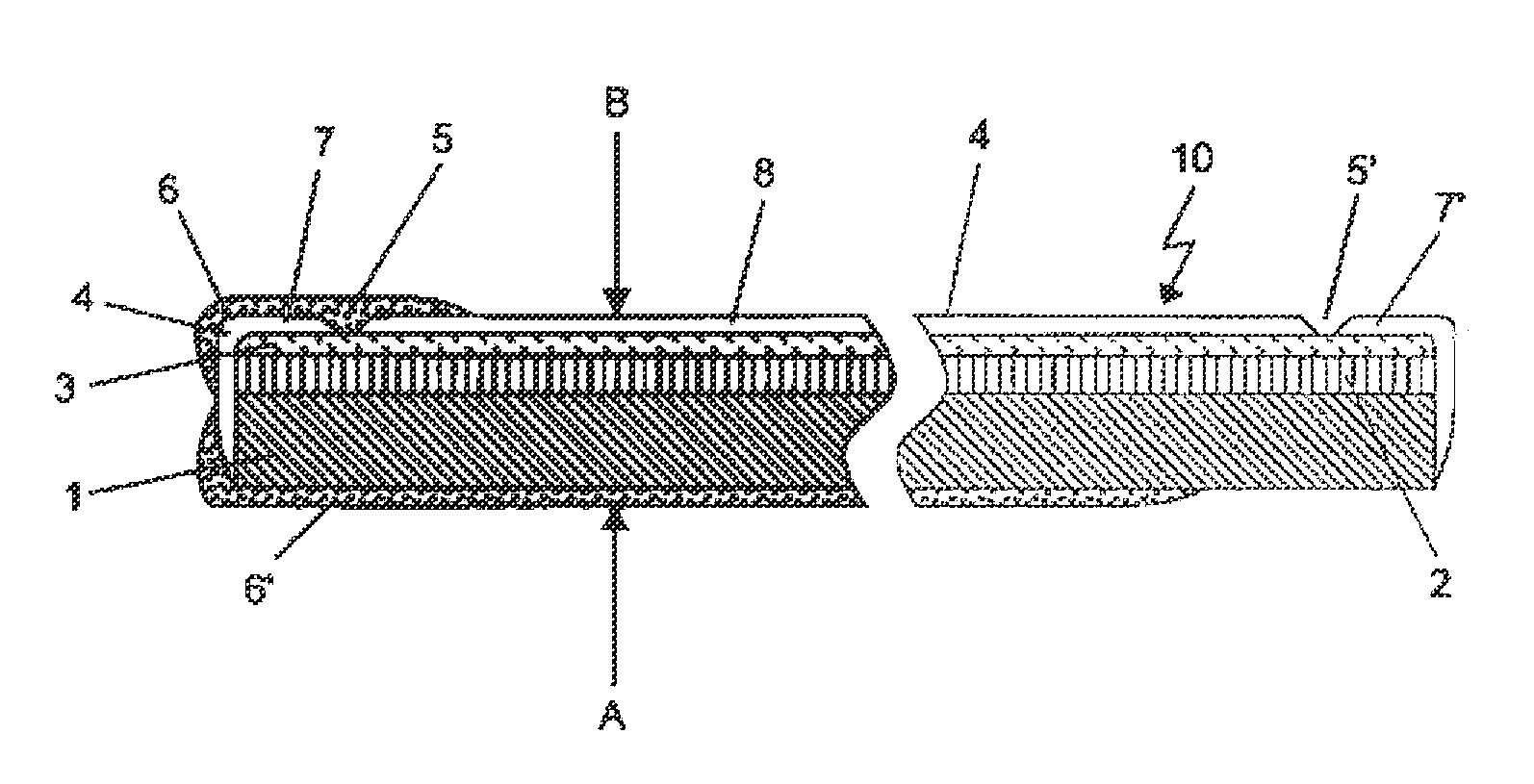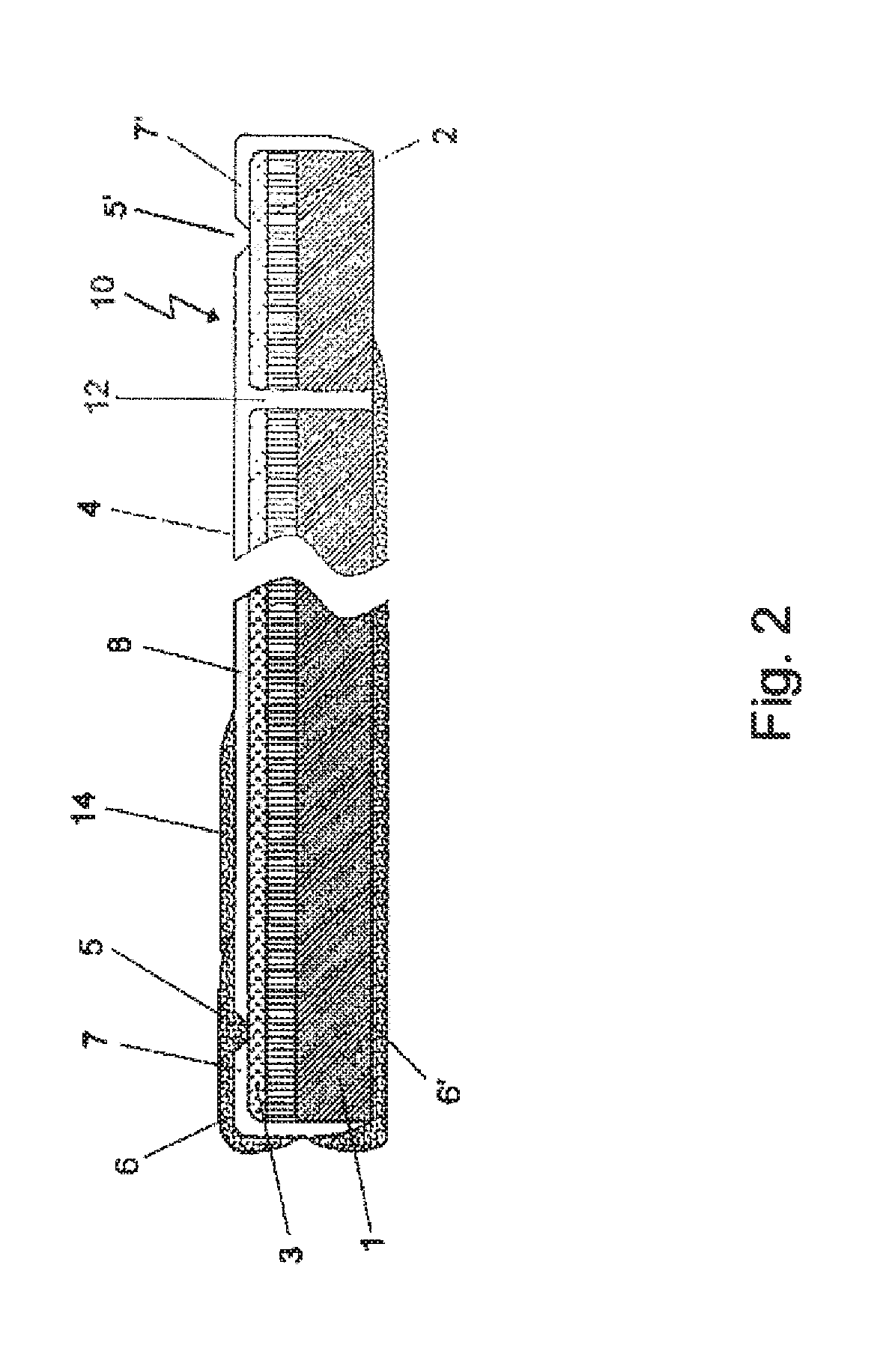Thin film solar cell and photovoltaic string assembly
a solar cell and film technology, applied in the field of thin film solar cells, can solve the problems of large surface area, low efficiency, and high cost of products
- Summary
- Abstract
- Description
- Claims
- Application Information
AI Technical Summary
Benefits of technology
Problems solved by technology
Method used
Image
Examples
Embodiment Construction
[0066]The general structure of the solar cells according to the invention is, starting from the lowermost side A as shown in FIG. 1 of the solar cell, an electrically conductive carrier 1, a back electrode 2, an absorber layer 3 forming the photoactive diode and on top B of the solar cell, a front electrode 4 in this sequence. Optionally, a buffer layer can be present between the absorber layer 3 and the front electrode 4. The incidence of light is from side B.
[0067]In the preferred embodiment according to FIG. 1 the invention relates to a thin film solar cell 10 comprising an electrically conductive carrier 1, a back electrode 2 which is directly electrically connected to and located on top of said carrier 1, an absorber layer 3 and a front electrode 4. In the solar cell according to FIG. 1 the front electrode (4) is divided into three parts 7, 7′, 8 by two grooves 5, 5′ which are provided for electrically isolating at least part 8 of the front electrode 4 of the solar cell from th...
PUM
 Login to View More
Login to View More Abstract
Description
Claims
Application Information
 Login to View More
Login to View More - R&D
- Intellectual Property
- Life Sciences
- Materials
- Tech Scout
- Unparalleled Data Quality
- Higher Quality Content
- 60% Fewer Hallucinations
Browse by: Latest US Patents, China's latest patents, Technical Efficacy Thesaurus, Application Domain, Technology Topic, Popular Technical Reports.
© 2025 PatSnap. All rights reserved.Legal|Privacy policy|Modern Slavery Act Transparency Statement|Sitemap|About US| Contact US: help@patsnap.com



